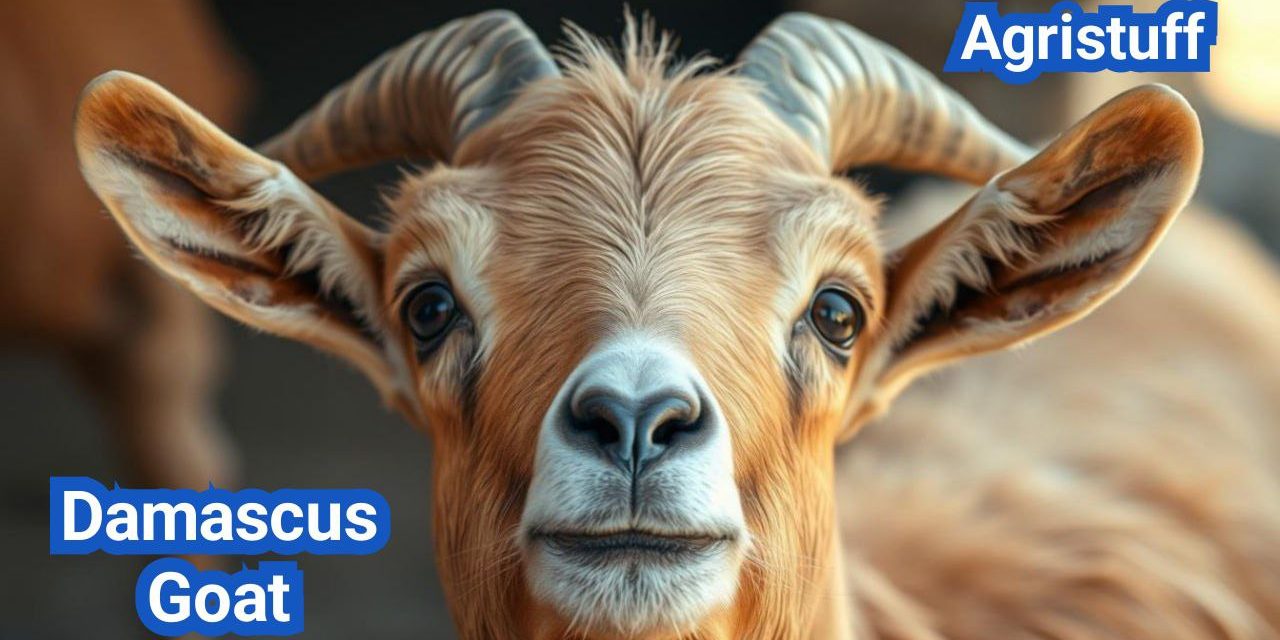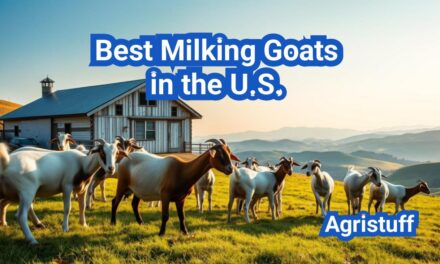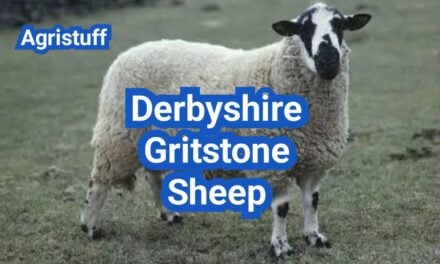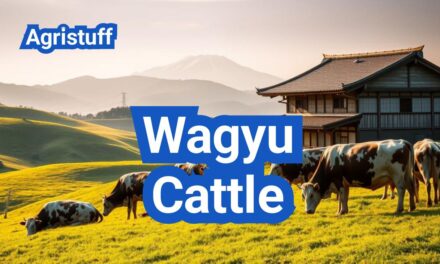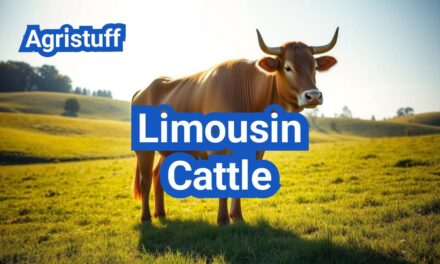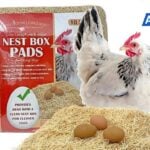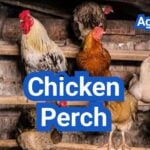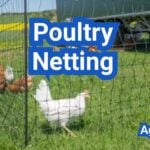The Damascus Goat, also known as the Syrian Dairy Goat, is a breed that stands out due to its unique look and historical significance. Originating in the Middle East, this breed is often referred to as the “bulldog of the goat world” because of its distinctive short snout.
This exotic dairy goat breed has been prized for its characteristics, making it a notable figure in dairy farming. The Damascus Goat’s appearance is just one aspect of its appeal, as its damascus goat characteristics include a robust build and a friendly temperament.
Key Takeaways
- The Damascus Goat is known for its unique appearance.
- It is often called the “bulldog of the goat world.”
- This breed is native to the Middle East.
- The Damascus Goat is valued for its dairy production.
- Its robust build and friendly temperament are notable characteristics.
The Damascus Goat: An Overview of This Unique Breed
Originating in Syria, the Damascus goat has become renowned for its adaptability to harsh desert climates. This breed has been a cornerstone of Syrian agriculture for centuries, valued for its milk production and resilience.
Origin and Historical Significance in Syria
The Damascus goat’s history is deeply intertwined with the region’s agricultural practices. Syrian farmers have long prized this breed for its ability to thrive in challenging environments. The breed’s historical significance extends beyond its utility, as it has become an integral part of Syrian heritage.
Global Distribution and Conservation Status
Today, the Damascus goat can be found in various parts of the world, including North America, Europe, and Australia. Despite its global distribution, the breed faces challenges related to conservation. Efforts are being made to preserve the genetic integrity of the Damascus goat, recognizing its value as a rare and unique breed.
The conservation status of the Damascus goat varies by region. In some countries, it is considered a priority for conservation due to its rarity, while in others, it has established a stable presence. Conservation initiatives focus on maintaining the breed’s genetic diversity and promoting its sustainable use in agriculture.
Distinctive Appearance Through Life Stages

The appearance of Damascus goats changes significantly through their life stages, making them a fascinating breed to observe. From the adorable features of the kids to the dramatic transformation into adults, the Damascus goat’s appearance is a journey worth noting.
Damascus Goat Baby: Adorable Early Features
Damascus goat kids are born with normal features but quickly develop characteristics that will define their adult appearance. Some of the early features include:
- Normal birth weight, typically around 3-4 kg
- Soft, fluffy coats that can vary in color
- Proportionate body size with relatively long legs
As they grow, the kids start to exhibit the breed’s characteristic features, although they are not as pronounced as in adults.
Damascus Goat Adult: The Dramatic Transformation
As Damascus goats mature, they undergo a significant transformation. Adults are characterized by:
- A short, convex facial profile
- Long, pendulous ears that are quite distinctive
- A robust body with well-developed muscles
This transformation is not just about size; the adult Damascus goat develops a unique appearance that is both striking and endearing.
Understanding the Baby vs Adult Appearance Contrast
The contrast between the baby and adult Damascus goat is quite dramatic. While kids are cute and endearing, adults possess a distinctive elegance. The change is not just physical; it’s also about the development of the breed’s characteristic features.
Key differences include:
| Feature | Damsacus Goat Baby | Damsacus Goat Adult |
|---|---|---|
| Facial Profile | Normal | Short, convex |
| Ears | Proportionate | Long, pendulous |
| Coat | Soft, fluffy | Varied, often thicker |
Physical Characteristics of Damascus Goats
The Damascus goat is renowned for its impressive physical attributes, making it a standout among dairy goat breeds. Their robust build and distinctive features contribute to their popularity in dairy farming.
Size, Weight, and Body Structure
Damascus goats are known for their large size. Bucks typically weigh between 70-90 kg, while does weigh between 50-65 kg. Their body structure is sturdy, with a well-developed musculature that supports their overall size. The breed’s robust build is an adaptation to their original environment in Syria, where they were bred for their strength and dairy production capabilities.
Distinctive Facial and Ear Features
One of the breed’s most distinctive features is its facial structure and ear size. Damascus goats have a convex facial profile and long, pendulous ears that contribute to their unique appearance. These distinctive facial and ear features are not only aesthetically pleasing but also play a role in the breed’s ability to adapt to various climates.
Coat Colors and Patterns
Damascus goats exhibit a variety of coat colors and patterns, ranging from reddish-brown to dark brown, and sometimes even black or white. The diversity in their coat colors adds to their visual appeal and is a characteristic that breeders look for when selecting animals for their herds.
The combination of their size, facial and ear features, and varied coat colors makes Damascus goats a visually striking breed. Understanding these physical characteristics is essential for breeders and farmers looking to incorporate this breed into their dairy operations.
Temperament and Behavior Traits

Known for their gentle disposition, Damascus goats are easily integrated into various farming systems. Their temperament is one of their most significant advantages, making them a popular choice for farmers worldwide.
Personality and Handling Considerations
Damascus goats are characterized by their friendly and docile nature. They are highly social animals that thrive on interaction, not just with humans but also with other livestock. This social affinity makes them relatively easy to handle, as they tend to be cooperative and responsive to care and management practices.
Their calm demeanor is particularly beneficial during milking and veterinary procedures, reducing stress for both the animals and the handlers. Farmers appreciate the Damascus goat’s temperament because it simplifies daily management tasks and contributes to a more peaceful farm environment.
Social Behavior with Other Livestock
Damascus goats are known to integrate well into herds with other livestock. Their friendly nature allows them to coexist harmoniously with a variety of farm animals, including sheep, cattle, and other goat breeds. This compatibility is advantageous for farmers who manage diverse livestock operations, as it simplifies the task of maintaining a cohesive and stress-free farm environment.
When introducing Damascus goats to other livestock, it’s essential to follow a gradual integration process to prevent any initial conflicts. However, their inherently social and docile nature generally ensures a smooth transition.
| Behavior Trait | Description | Benefit to Farmers |
|---|---|---|
| Docility | Gentle and easy to handle | Simplifies daily management and milking |
| Social Affinity | Thrives on interaction with humans and other animals | Enhances farm harmony and reduces stress |
| Adaptability | Easily integrates into diverse livestock herds | Facilitates mixed farming operations |
Damascus Goat Milk Production Benefits
One of the standout features of Damascus goats is their impressive milk production. The breed is celebrated for its ability to produce high-quality milk, making it a valuable asset for dairy farming operations.
Milk Yield and Quality Metrics
Damascus goats are capable of producing between 350-650 kg of milk per lactation. This significant milk yield is complemented by the breed’s high-quality milk characteristics, which are rich in nutrients and have a high butterfat content.
Milk yield is a critical factor in dairy farming, and Damascus goats excel in this area. Their milk is not only abundant but also of superior quality, making it ideal for various dairy products.
High Butterfat Content and Nutritional Value
The milk produced by Damascus goats is renowned for its high butterfat content, which contributes to its rich nutritional profile. This characteristic makes the milk particularly suitable for producing cheese, butter, and other dairy products where fat content is a valuable attribute.
The nutritional value of Damascus goat milk is further enhanced by its richness in proteins, vitamins, and minerals. This makes it a healthy choice for consumption and a valuable resource for dairy product manufacturing.
Lactation Period Management for Maximum Production
Effective lactation period management is crucial for maximizing milk production in Damascus goats. Farmers need to ensure that the goats are well-nourished and receive appropriate care to maintain high milk yields throughout their lactation period.
Proper management practices include providing a balanced diet, ensuring access to clean water, and maintaining the overall health of the goats. By adopting these practices, farmers can optimize milk production and benefit from the breed’s full potential.
How to Start Raising Damascus Goats
The decision to start a Damascus goat farm should be backed by thorough research and planning. Raising Damascus goats in the USA can be a rewarding venture, but it requires careful consideration of several factors.
Assessing Farm Suitability for Damascus Goats
Before investing in Damascus goats, it’s crucial to assess whether your farm is suitable for these animals. Damascus goats require adequate space, proper fencing, and suitable climate conditions. Farmers should evaluate their land’s topography, climate, and existing infrastructure to determine if it can support the needs of Damascus goats.
- Evaluate the available grazing land and forage quality.
- Consider the climate and its potential impact on the goats’ health.
- Assess the existing fencing and shelter infrastructure.
Initial Investment and Resource Requirements
Starting a Damascus goat farm requires a significant initial investment. This includes the cost of purchasing quality breeding stock, building or renovating facilities, and acquiring necessary equipment. Farmers should also budget for ongoing expenses such as feed, veterinary care, and supplies.
- Calculate the cost of purchasing initial breeding stock.
- Budget for infrastructure development, including fencing and shelter.
- Plan for ongoing expenses such as feed and veterinary care.
According to agricultural experts, “The initial investment in a goat farm can be substantial, but with proper planning, it can be a profitable venture” (
Agricultural Expert, Goat Farming Guide
).
Finding and Selecting Quality Damascus Goats in the USA
Finding quality Damascus goats is critical to the success of your farm. Farmers should look for reputable breeders who can provide healthy, genetically superior animals. It’s essential to research and visit potential breeders to assess the quality of their stock.
- Research reputable breeders in the USA.
- Visit breeders to assess the health and quality of their goats.
- Consider the genetic diversity and milk production potential of the goats.
By carefully assessing farm suitability, planning initial investments, and selecting quality breeding stock, farmers in the USA can successfully start and maintain a Damascus goat farm.
Setting Up Proper Housing and Facilities

Setting up the right facilities is essential for raising Damascus goats successfully. Proper housing and facilities play a crucial role in ensuring the health, safety, and productivity of these animals.
Shelter Design for Comfort
The shelter for Damascus goats should be designed to provide comfort and protection from the elements. A well-ventilated barn or shelter with adequate bedding is essential. The structure should be sturdy enough to withstand various weather conditions.
Key considerations for shelter design include:
- Adequate ventilation to prevent respiratory issues
- Protection from extreme temperatures
- Sufficient space for movement and comfort
- Easy cleaning and maintenance
Fencing and Predator Protection
Fencing is a critical aspect of Damascus goat housing, serving both to contain the goats and protect them from predators. The fencing should be robust and tall enough to prevent escape and predation.
Effective fencing strategies include:
- Using high-tensile wire or electric fencing
- Ensuring the fence is at least 5 feet tall
- Burying the fence 12 inches underground to prevent digging
Essential Equipment and Supplies
In addition to proper shelter and fencing, several pieces of equipment and supplies are necessary for the care of Damascus goats.
| Equipment/Supply | Purpose |
|---|---|
| Feeding troughs | For efficient feeding |
| Watering systems | To ensure access to clean water |
| Bedding materials | For comfort and hygiene |
By focusing on these aspects, farmers can create a suitable environment for their Damascus goats, enhancing their overall well-being and productivity.
Feeding and Nutrition Management

To achieve optimal health and production, Damascus goats need a carefully managed feeding and nutrition plan. A well-balanced diet is crucial for maintaining their overall health, maximizing milk production, and ensuring the quality of dairy products.
Daily Dietary Requirements and Feed Formulation
Damascus goats require a diet that includes a mix of roughage, concentrates, and access to clean water. The daily dietary requirements can vary based on factors such as age, size, and stage of lactation. A typical diet for Damascus goats includes:
- High-quality hay or pasture for roughage
- Concentrates such as grains and protein supplements
- Minerals and vitamins to ensure nutritional balance
Feed formulation should be tailored to meet the specific needs of the goats, taking into account their nutritional requirements and the quality of the available feed ingredients.
| Nutrient | Requirement | Feed Source |
|---|---|---|
| Protein | 12-15% | Grains, protein supplements |
| Energy | 2.5-3.0 Mcal/kg | Grains, hay |
| Calcium | 0.8-1.0% | Hay, mineral supplements |
| Phosphorus | 0.4-0.6% | Grains, mineral supplements |
Supplementation for Optimal Health and Production
Supplementation may be necessary to ensure that Damascus goats receive all the necessary nutrients for optimal health and production. This can include mineral and vitamin supplements, as well as specific nutrients that may be lacking in their regular diet.
Key supplements for Damascus goats include:
- Mineral blocks or loose minerals
- Vitamin D and E supplements
- Omega-3 fatty acids for improved milk quality
Water Requirements and Delivery Systems
Adequate access to clean water is essential for the health and productivity of Damascus goats. Water requirements can vary based on factors such as temperature, humidity, and stage of lactation.
Best practices for water delivery include:
- Providing multiple water sources to prevent competition
- Using water delivery systems that minimize waste and contamination
- Regularly cleaning and maintaining water delivery equipment
By implementing a well-managed feeding and nutrition plan, Damascus goat farmers can optimize the health and productivity of their herd, leading to improved milk production and quality.
Implementing a Damascus Goat Health Care Program
To ensure the optimal health of Damascus goats, farmers must implement a robust health care program. This program is crucial for preventing diseases, promoting overall well-being, and maximizing the productivity of the goats.
Preventative Health Protocols
Preventative health protocols form the foundation of a successful health care program for Damascus goats. These protocols include regular health checks, maintaining a clean living environment, and providing a balanced diet. Regular health checks help in early detection of diseases, while a clean environment and balanced diet boost the goats’ immune systems.
Key Components of Preventative Health Protocols:
- Regular health inspections
- Sanitation and hygiene practices
- Nutritional management
Vaccination Schedule and Parasite Control
A well-planned vaccination schedule and effective parasite control measures are critical for protecting Damascus goats against diseases and parasites. Vaccinations help build immunity against specific diseases, while parasite control measures prevent infestations that can lead to significant health issues.
| Vaccination/Type | Frequency | Importance |
|---|---|---|
| CDT Vaccination | Annually | Protects against Clostridium perfringens type C and D, and tetanus |
| Parasite Control | Quarterly | Prevents internal parasite infestations |
Recognizing and Addressing Common Health Issues
Damascus goats are susceptible to various health issues, including respiratory infections, parasites, and reproductive problems. Early recognition of these issues is crucial for effective management. Farmers should be aware of the signs and symptoms of common health problems and have a plan in place for addressing them promptly.
Common health issues in Damascus goats include:
- Respiratory infections
- Parasitic infestations
- Reproductive issues
By implementing a comprehensive health care program that includes preventative health protocols, a vaccination schedule, parasite control, and monitoring for common health issues, farmers can ensure the well-being and productivity of their Damascus goats.
Damascus Goat Breeding Management

A comprehensive breeding management strategy is vital for Damascus goat breeders aiming to improve their herd’s genetic quality. Effective breeding management involves several critical components that work together to enhance the productivity and overall health of the goats.
Breeding Season Preparation and Heat Detection
Preparing for the breeding season is a crucial step in Damascus goat breeding management. This involves ensuring that both male and female goats are in optimal health and condition. Heat detection is another vital aspect, as it helps breeders identify the right time for mating. Techniques such as observing behavioral changes in does, like increased vocalization and restlessness, can indicate they are in estrus.
Utilizing a breeding program that includes a well-planned breeding season can significantly improve conception rates and overall herd productivity. It’s also essential to maintain accurate records of breeding dates, expected kidding dates, and actual kidding outcomes to refine future breeding strategies.
Pregnancy and Kidding Management
Managing pregnancy and kidding is a delicate process that requires careful planning and attention to detail. Providing pregnant does with proper nutrition is critical to support the development of healthy kids and maintain the doe’s health. Pregnancy scanning can help identify the number of kids and detect any potential issues early on.
During kidding, having a clean and safe environment is paramount to reduce the risk of disease. Monitoring the kidding process closely allows breeders to intervene if necessary and ensure that both the doe and kids receive appropriate care immediately after birth.
Genetic Selection for Herd Improvement
Genetic selection is a powerful tool in improving the quality and productivity of a Damascus goat herd. By selecting animals with desirable traits such as high milk production, robust health, and good conformation, breeders can enhance their herd over generations.
Implementing a structured genetic selection program involves maintaining detailed records of individual animal performance and pedigree information. This data-driven approach enables breeders to make informed decisions about which animals to retain for breeding and which to cull.
Integrating Damascus Goats into Sustainable Farming Systems

Damascus goats offer a unique opportunity for farmers to adopt sustainable farming practices that promote ecological balance. By incorporating these goats into their farming systems, farmers can enhance biodiversity, improve soil health, and increase overall farm productivity.
The integration of Damascus goats into farming operations can be achieved through various practices. One such practice is rotational grazing, which involves moving the goats to different grazing areas to prevent overgrazing and allow pastures to recover. This not only improves the health of the pastures but also contributes to better land management.
Complementary Farm Activities and Rotational Grazing
Damascus goats can be part of a diverse farming system that includes other livestock and crops. By integrating goats with other farm activities, farmers can create a more resilient and productive farm ecosystem. For example, goats can be used to control weeds and brush, reducing the need for herbicides and mechanical clearing.
Rotational grazing is a key strategy for maintaining pasture health and promoting environmental benefits. By rotating goats through different pastures, farmers can help to maintain soil fertility, reduce erosion, and promote the growth of diverse plant species.
| Farm Activity | Benefits | Impact on Sustainability |
|---|---|---|
| Rotational Grazing | Improved pasture health, reduced erosion | High |
| Complementary Livestock | Diverse farm ecosystem, improved biodiversity | High |
| Brush Control | Reduced need for herbicides, improved land management | Medium |
Environmental Benefits and Land Management
The incorporation of Damascus goats into sustainable farming systems can lead to numerous environmental benefits. These include improved soil health, increased biodiversity, and enhanced ecosystem services. By adopting practices like rotational grazing, farmers can also improve land management, reducing the risk of overgrazing and promoting more efficient use of land resources.
In conclusion, integrating Damascus goats into sustainable farming systems offers a range of benefits for both farmers and the environment. By adopting complementary farm activities and rotational grazing practices, farmers can promote ecological balance, improve land management, and enhance overall farm productivity.
Marketing Damascus Goat Products and Services

Damascus goats provide various opportunities for farmers to diversify their income streams through dairy products, breeding stock, and agritourism. By leveraging these opportunities, farmers can enhance the profitability of their Damascus goat farming operations.
Developing Dairy Product Lines
Creating a diverse range of dairy products is a crucial strategy for marketing Damascus goat milk. This can include cheese, butter, yogurt, and ice cream, all of which can be produced using the high-quality milk from Damascus goats. The high butterfat content of their milk makes it particularly suitable for producing rich and creamy dairy products.
To successfully market these products, farmers can focus on their unique selling points, such as the breed’s heritage and the nutritional benefits of their milk. Labeling products with information about the Damascus goat breed can also help attract consumers looking for unique or heritage products.
Breeding Stock Sales Strategies
Damascus goats are highly valued for their breeding potential due to their superior milk production traits. To market breeding stock effectively, farmers should focus on the genetic superiority and milk production records of their animals. Participating in agricultural shows and sales events can provide valuable opportunities to showcase the quality of the breeding stock.
Utilizing online platforms and social media can also be an effective way to reach potential buyers. Creating a professional online presence and using targeted advertising can help attract buyers interested in high-quality breeding stock.
Agritourism and Educational Opportunities
Agritourism offers another avenue for generating income from Damascus goat farming. By opening the farm to visitors, farmers can provide educational experiences about goat farming, dairy production, and the specific characteristics of the Damascus breed. This can include farm tours, workshops, and hands-on activities.
To capitalize on agritourism, farmers should develop a comprehensive agritourism plan that includes marketing the unique aspects of their farm and the Damascus goat breed. Offering high-quality products and experiences on-site can also enhance the visitor experience and encourage repeat visits.
Damascus Goats Compared to Other Syrian Breeds

Comparing Damascus goats to other Syrian breeds reveals both similarities and differences that can inform breeding decisions. Syrian goat breeds share some common traits due to their adaptation to the region’s climate and terrain, but each breed has its unique characteristics.
Similarities and Differences with Related Breeds
Other Syrian breeds, such as the Baladi and the Aleppo, may share some physical and behavioral traits with Damascus goats. For instance, many Syrian breeds are known for their hardiness and ability to thrive in challenging environments. However, differences in milk production, coat color, and body size can be significant.
- Milk Production: Damascus goats are renowned for their high milk yield and butterfat content, making them a preferred choice for dairy farming.
- Physical Characteristics: While Damascus goats have a distinctive appearance, other breeds may have different coat colors or horn shapes.
- Adaptability: All Syrian breeds are adapted to the local climate, but their tolerance to extreme temperatures or humidity levels may vary.
Selecting the Right Syrian Breed for Your Farm Goals
When selecting a Syrian breed for your farm, it’s essential to consider your specific goals and management practices. Factors such as milk production needs, land availability, and market demand should influence your decision.
- Assess Your Farm’s Resources: Evaluate the land, climate, and available infrastructure to determine which breed will thrive.
- Define Your Production Goals: Whether you’re focused on dairy, meat, or breeding stock, choose a breed that aligns with your objectives.
- Research Local Breeds: Understanding the characteristics of local Syrian breeds can help you make an informed decision.
By carefully considering these factors and understanding the similarities and differences between Damascus goats and other Syrian breeds, farmers can make informed decisions that best suit their operations and goals.
Overcoming Challenges of Raising Damascus Goats in the USA
The challenges of raising Damascus goats in the USA are multifaceted, involving climate adaptation, regional considerations, and regulatory compliance. Farmers must be prepared to address these challenges to successfully integrate Damascus goats into their farming operations.
Climate Adaptation and Regional Considerations
Damascus goats, originating from Syria, are adapted to a Mediterranean climate. When raising these goats in the USA, farmers must consider the local climate and adapt their management practices accordingly. For instance, in regions with extreme temperatures or humidity levels, providing appropriate shelter and care is crucial.
Regional considerations also play a significant role in the successful raising of Damascus goats. Different regions in the USA have varying environmental conditions, such as temperature fluctuations, humidity, and vegetation. Understanding these regional factors helps farmers make informed decisions about goat care and management.
| Region | Climate Considerations | Management Strategies |
|---|---|---|
| Northeast | Cold winters, cool summers | Provide warm shelter, adjust diet for cold stress |
| Southwest | Hot desert climate | Ensure shade, adequate water supply, and heat stress management |
| Southeast | Hot and humid | Provide cooling measures, monitor for heat stress, and manage parasite control |
Regulatory Compliance and Import Restrictions
Raising Damascus goats in the USA also involves complying with regulatory requirements and understanding import restrictions. Farmers must familiarize themselves with local, state, and federal regulations regarding the importation and management of exotic or foreign animal breeds.
“The importation of Damascus goats into the USA is subject to strict regulations, including health certifications and quarantine protocols. Farmers must work closely with regulatory agencies to ensure compliance.”
Import restrictions can impact the availability and cost of acquiring Damascus goats. Farmers should be aware of these restrictions and plan accordingly, considering factors such as the cost of importation, quarantine requirements, and potential genetic diversity limitations.
- Research local and national regulations
- Understand health and quarantine requirements
- Plan for the costs associated with importing Damascus goats
By understanding and addressing these challenges, farmers in the USA can successfully raise Damascus goats, benefiting from their unique characteristics and contributions to sustainable farming practices.
The Future of Damascus Goats in American Agriculture
The Damascus goat breed is poised to make a significant impact on American agriculture, driven by its unique characteristics and the growing demand for high-quality dairy products. As farmers and consumers increasingly seek sustainable and locally sourced options, the adaptability of Damascus goats to various farming systems positions them for success.
The future prospects of Damascus goats depend on several key factors, including their ability to thrive in different climates and the continued development of sustainable farming practices. By integrating Damascus goats into diversified farming operations, farmers can enhance biodiversity, improve soil health, and promote ecosystem services.
As the American agricultural landscape evolves, the Damascus goat breed is well-placed to capitalize on emerging trends and opportunities. With its rich milk production and robust health profile, this breed is set to contribute significantly to the country’s dairy sector, supporting local economies and promoting a more sustainable food system.
FAQ
What is a Damascus goat?
The Damascus goat is a breed of goat known for its unique appearance and high milk production, originating from the Middle East, particularly Syria.
What is the Damascus goat used for?
Damascus goats are primarily used for dairy production due to their high milk yield and butterfat content, making them valuable for cheese and dairy product production.
What are the distinctive features of Damascus goats?
Damascus goats are characterized by their large size, distinctive facial features, and varied coat colors and patterns, which change significantly from the kid stage to adulthood.
How do Damascus goats compare to other Syrian breeds?
Damascus goats are compared to other Syrian breeds based on their milk production, temperament, and adaptability, with the Damascus being notable for its high milk yield.
What are the challenges of raising Damascus goats in the USA?
Raising Damascus goats in the USA involves challenges such as climate adaptation, regulatory compliance, and import restrictions, requiring careful planning and management.
How much does a Damascus goat cost?
The cost of a Damascus goat can vary based on factors such as age, quality, and breeding potential, with prices ranging from a few hundred to several thousand dollars.
What are the benefits of Damascus goat milk production?
Damascus goat milk is rich in nutrients and has a high butterfat content, making it ideal for producing high-quality dairy products such as cheese and butter.
How to care for a Damascus goat?
Caring for Damascus goats involves providing proper housing, nutrition, health care, and breeding management to ensure their well-being and productivity.
What is the temperament of Damascus goats?
Damascus goats are known for their friendly and docile nature, making them suitable for various farming systems and handling by farmers.
Are Damascus goats hardy?
Damascus goats are considered relatively hardy, but like all breeds, they require proper care and management to thrive in different environments.
What is the purpose of Damascus goat breeding management?
Breeding management for Damascus goats aims to improve the genetic quality of the herd, enhance milk production, and maintain the breed’s distinctive characteristics.
How to integrate Damascus goats into sustainable farming systems?
Integrating Damascus goats into sustainable farming involves practices such as rotational grazing, complementary farm activities, and environmentally friendly management to enhance land use and biodiversity.
What are the marketing opportunities for Damascus goat products?
Marketing opportunities for Damascus goat products include developing dairy product lines, breeding stock sales, agritourism, and educational activities that capitalize on the breed’s unique features and production capabilities.
Conclusion of: The Damascus Goat A Comprehensive Guide to Raising Syria’s Prized Dairy Breed
The Damascus goat, also known as the Shami goat or Aleppo goat, is a highly valued dairy breed originating from Syria and the Middle East. Renowned for its unique appearance, high milk yield, and adaptability, this breed has gained global popularity, including in the United States, where farmers appreciate its economic potential and striking looks.
🔗 FAO Report on Damascus Goats
This guide covers everything you need to know about Damascus goats—from their physical traits and milk production to care, breeding, and market opportunities.
1. What Is a Damascus Goat?
The Damascus goat is a dairy breed prized for its high milk production, distinctive facial structure, and adaptability to various climates. Originally from Syria, Lebanon, and Cyprus, it has been exported worldwide for its superior dairy qualities and cultural significance.
🔗 Britannica: Domestic Goat Breeds
Why Are Damascus Goats Popular in the USA?
- High milk yield (1.9 kg/day, up to 570 kg per lactation).
- Rich, high-fat milk (4-5% butterfat), ideal for cheese and yogurt.
- Unique appearance (long ears, convex profile) attracts hobby farmers and shows.
- Strong adaptability to different climates, including hot and arid regions.
🔗 USDA Goat Farming Guide
2. Physical Characteristics
Damascus goats are easily recognizable due to their distinctive features:
- Long, drooping ears (sometimes curled).
- Convex (Roman-nosed) facial profile.
- Red-brown coat (though black, white, or mixed colors exist).
- Large size: Bucks weigh 70–90 kg, does 50–60 kg.
🔗 Oklahoma State University: Goat Breeds
3. Milk Production & Dairy Potential
Damascus goats are elite dairy producers, making them ideal for commercial and artisanal farming:
- Average yield: 1.9 kg/day, up to 570 kg per lactation.
- High butterfat (4-5%) and protein content, perfect for cheese, yogurt, and gourmet dairy.
- Long lactation cycles, ensuring consistent production.
🔗 Dairy Goat Journal: Milk Composition
Best Uses for Damascus Goat Milk
- Cheesemaking (popular in Europe and the Middle East).
- Goat milk powder (used in infant formula).
- Direct sales (farmers’ markets, organic dairy).
🔗 American Dairy Goat Association (ADGA)
4. Housing & Farm Setup
Proper housing ensures health and productivity:
- Ventilated, dry shelters to prevent respiratory issues.
- Secure fencing (Damascus goats are active foragers).
- Separate kidding pens for newborn safety.
- Shade and cooling systems in hot climates.
🔗 Penn State Extension: Goat Housing
Pro Tip: Clean bedding and regular disinfection reduce parasite risks.
5. Feeding & Nutrition
A balanced diet maximizes milk yield:
- Pasture & browse (primary diet).
- High-quality hay (alfalfa preferred).
- Grain supplements during peak lactation.
- Mineral licks (calcium, phosphorus, selenium).
🔗 University of Arkansas: Goat Nutrition
Avoid: Overfeeding grains (can cause bloat) and moldy feed.
6. Breeding & Reproduction
Damascus goats have strong fertility traits:
- Frequent twins/triplets (high kidding rates).
- Year-round breeding (no strict seasonal cycle).
- Bucks should be selected for dairy genetics to improve milk traits.
🔗 Texas A&M AgriLife: Goat Reproduction
Kid Management
- Colostrum within 2 hours (critical for immunity).
- Bottle or dam-rearing (depends on farm setup).
- Vaccinations & deworming (start at 4 weeks).
🔗 Cornell University: Goat Kid Care
7. Health & Veterinary Care
Common health concerns include:
- Parasites (worms, ticks) – regular deworming needed.
- Mastitis – monitor udder health and hygiene.
- Hoof rot – trim hooves every 4-6 weeks.
🔗 Merck Veterinary Manual: Goat Health
Vaccination Schedule:
- CDT (Clostridium) – annually.
- Pneumonia vaccines – if in high-risk areas.
8. Market Opportunities & Profitability
Damascus goats offer multiple revenue streams:
✅ Specialty dairy products (cheese, yogurt, milk).
✅ Breeding stock sales (high demand for purebreds).
✅ Hobby farms & livestock shows (unique appearance).
✅ Export potential (Middle East, Europe, USA).
🔗 USDA Market News: Goat Prices
Economic Benefits
- Premium milk prices (due to high fat content).
- Lower vet costs (hardy breed with fewer health issues).
- Long productive lifespan (up to 10+ years).
🔗 Small Farms Journal: Goat Profitability
9. Pros & Cons of Raising Damascus Goats
Pros
✔ Excellent milk production.
✔ Adaptable to heat and varied climates.
✔ High fertility (frequent twins/triplets).
✔ Strong market demand for dairy and breeding.
🔗 National Sustainable Agriculture Coalition
Cons
❌ High nutritional needs during lactation.
❌ Parasite susceptibility (requires regular deworming).
❌ Limited mainstream market (mostly specialty buyers).
🔗 American Consortium for Small Ruminant Parasite Control
10. Final Thoughts
The Damascus goat is a highly profitable and sustainable choice for dairy farmers, homesteaders, and specialty breeders. With proper care, nutrition, and marketing, this breed can be a lucrative addition to any farming operation.
For more details on genetic improvements in Damascus goats, check this study on GHRHR gene variants.

